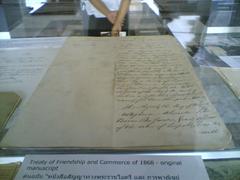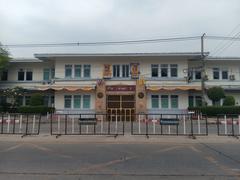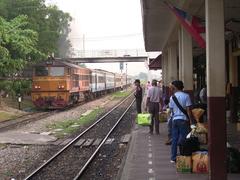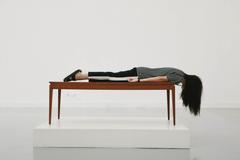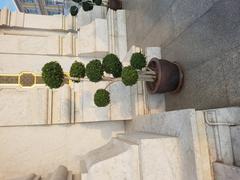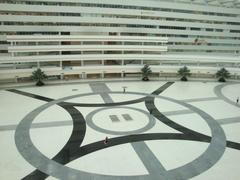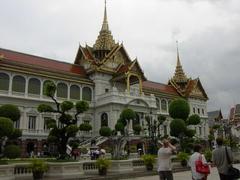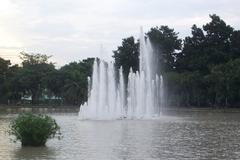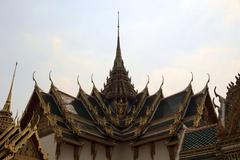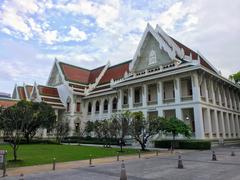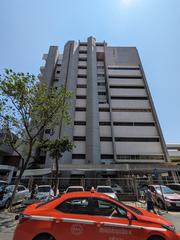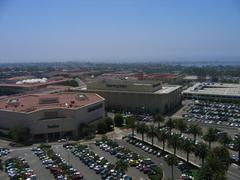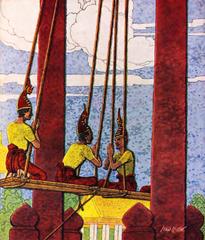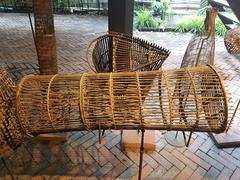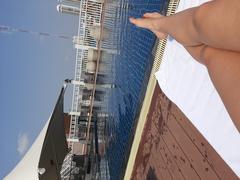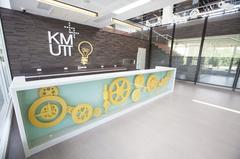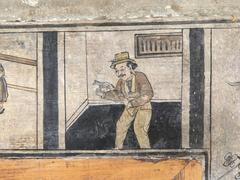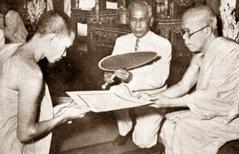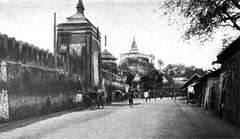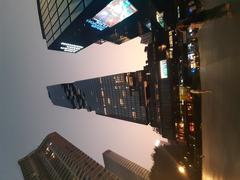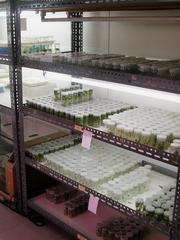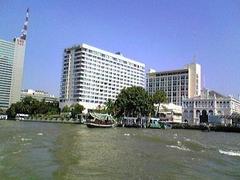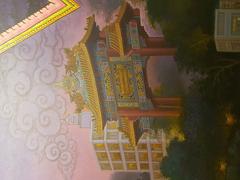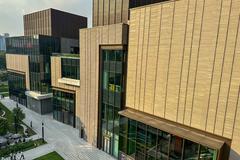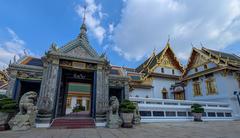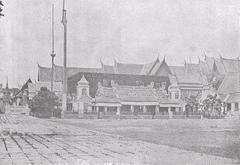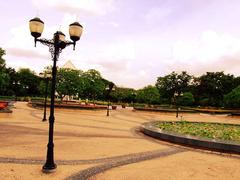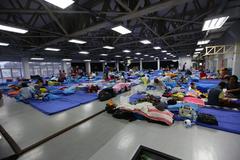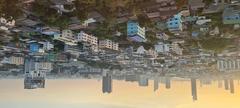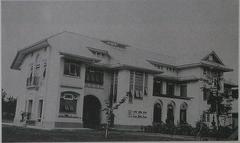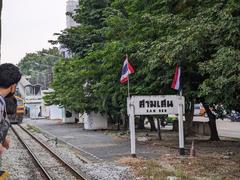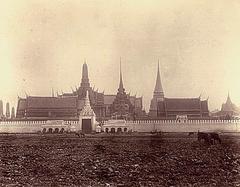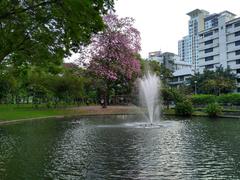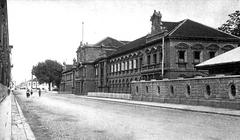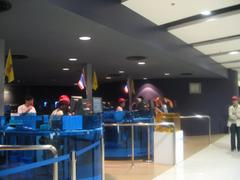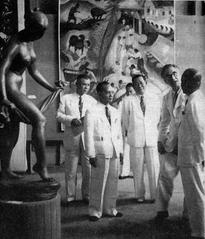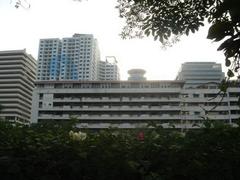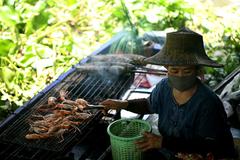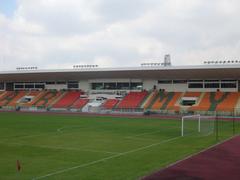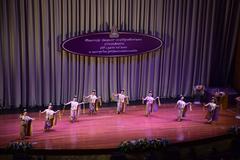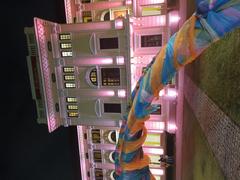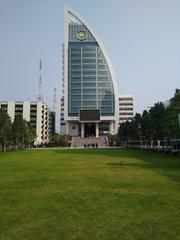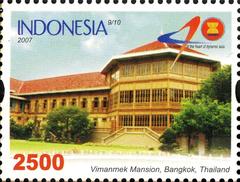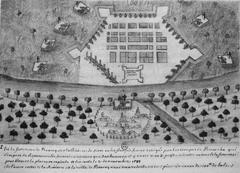Phra Thinang Phiman Rataya: Visiting Hours, Tickets, and Historical Significance in Bangkok
Date: 04/07/2025
Introduction
Phra Thinang Phiman Rataya, situated within the renowned Grand Palace complex in Bangkok, stands as a testament to Thailand’s royal heritage and architectural splendor. This royal residence, constructed during the early Rattanakosin era and later expanded by King Rama IV and King Rama V, beautifully merges traditional Thai design with Western influences. While its interiors remain off-limits to the public to preserve its sanctity and function, visitors can marvel at its ornate façade and unique roof ornamentation from select areas within the palace grounds. This guide delves into Phra Thinang Phiman Rataya’s history, cultural significance, architectural highlights, and practical visitor information—including tickets, opening hours, dress code, and travel advice—to help you make the most of your visit to this iconic Bangkok landmark (palacebangkok.wordpress.com, touristbangkok.com, dancarndt.wordpress.com).
Contents
- Origins and Construction
- Role in Royal Life and Ceremonies
- Architectural Features and Symbolism
- Historical Events and Evolution
- Modern-Day Royal Significance
- Visiting Information: Tickets, Hours, Dress Code, and Tips
- Getting There and Accessibility
- Nearby Attractions
- Frequently Asked Questions
- Conclusion and Travel Tips
- Sources
Origins and Construction
Phra Thinang Phiman Rataya was one of the earliest structures erected after the founding of the Rattanakosin Kingdom in 1782 by King Rama I. Conceived as the principal royal residence within the new Grand Palace, it was designed to provide privacy and security for the monarch and his immediate family. Its architectural motifs reflect the early Rattanakosin style, incorporating elements reminiscent of the Ayutthaya era. Over time, especially under King Rama IV and King Rama V, the residence was renovated and subtly modernized to reflect evolving royal needs and the introduction of Western architectural elements (palacebangkok.wordpress.com).
Role in Royal Life and Ceremonies
Historically, Phra Thinang Phiman Rataya was the king’s private residence, featuring living quarters, reception halls, and meeting rooms for state and familial affairs. The building hosted morning and evening audiences, confidential discussions with state officials, and religious rites. Its proximity to Wat Phra Kaew (Temple of the Emerald Buddha) also emphasized the close relationship between spiritual and temporal power in Thai monarchy (palacebangkok.wordpress.com).
Architectural Features and Symbolism
This royal residence is renowned for its elevated platform, multi-tiered roof topped with chofah (stylized finials), and elaborate wood and mother-of-pearl inlay. Gold leaf and lacquer ornamentation reflect regal opulence. The arrangement of rooms and halls enforces palace hierarchy, and the central audience chamber is adorned with murals and royal emblems, underscoring the building’s ceremonial importance.
Historical Events and Evolution
Phra Thinang Phiman Rataya has been the backdrop for numerous pivotal events. King Rama IV modernized it to accommodate both administrative and ceremonial functions, incorporating Western styles while maintaining traditional aesthetics (shiysihang.com). The hall has also served as a sanctuary during political turmoil, symbolizing stability amid change.
Modern-Day Royal Significance
Although the main royal residence has relocated, Phra Thinang Phiman Rataya remains central to state ceremonies such as coronations and royal birthdays. It stands as a living monument to the continuity of the Chakri Dynasty, with the Bureau of the Royal Household preserving its historical features for official functions (palacebangkok.wordpress.com).
Visiting Information: Tickets, Hours, Dress Code, and Tips
Opening Hours
- Daily: 8:30 AM – 3:30 PM (last admission at 3:30 PM). The palace may close for royal or state functions.
Ticketing
- Adults: 500 THB (includes admission to Grand Palace, Wat Phra Kaew, and Khon dance performance).
- Children: Free under 120 cm.
- Audio Guide: 200 THB rental (various languages).
Tickets are available at the entrance or online via authorized vendors (touristbangkok.com).
Dress Code
- Shoulders and knees must be covered. No sleeveless tops, shorts, or ripped clothing.
- Cover-ups are available for rent at the entrance.
Visitor Conduct
- Remain within designated viewing areas.
- Outdoor photography is allowed; indoor photography is restricted.
- Respect all signs and staff directives.
Getting There and Accessibility
Location
Address: Phra Borom Maha Ratchawang, Phra Nakhon, Bangkok 10200, Thailand.
Transportation
- MRT: Sanam Chai Station, then walk or take a tuk-tuk.
- BTS & River Ferry: Saphan Taksin BTS to Tha Chang Pier, then a short walk.
- Bus: Multiple routes available.
- Taxi/Tuk-Tuk: Widely accessible; have your destination in Thai.
- Car: No parking on-site; use nearby lots.
Accessibility
- Wheelchairs available at the entrance.
- Ramps and accessible restrooms serve most areas, but some surfaces are uneven.
Nearby Attractions
- Wat Pho (Temple of the Reclining Buddha)
- Wat Arun (Temple of Dawn)
- Bangkok National Museum
- Museum Siam
- Grand Palace Museum
These sites are within walking distance or a short river crossing from the Grand Palace.
Frequently Asked Questions (FAQ)
Can I enter Phra Thinang Phiman Rataya?
No. The interior is reserved for royal functions, but the exterior can be admired from within the palace grounds.
Is photography allowed?
Yes, in most outdoor areas. It is forbidden inside certain buildings and during ceremonies.
What are the palace opening hours?
8:30 AM – 3:30 PM daily, but check for occasional closures.
How do I buy tickets?
At the main entrance or via authorized online sources.
Is the Grand Palace accessible for people with disabilities?
Most areas are accessible; wheelchairs are available for loan.
Conclusion and Travel Tips
Phra Thinang Phiman Rataya epitomizes Thailand’s enduring royal traditions and architectural elegance. Although interior access is restricted, viewing its exterior within the Grand Palace complex connects visitors to centuries of Thai history. For a meaningful experience:
- Arrive early or visit late to avoid crowds.
- Dress appropriately and follow all palace etiquette.
- Use official guides or audio guides for deeper understanding.
- Explore nearby cultural sites to enrich your Bangkok visit.
For real-time updates, guided tours, and ticketing, consult official resources or the Grand Palace website. Download the Audiala app and follow relevant social media for exclusive content.
